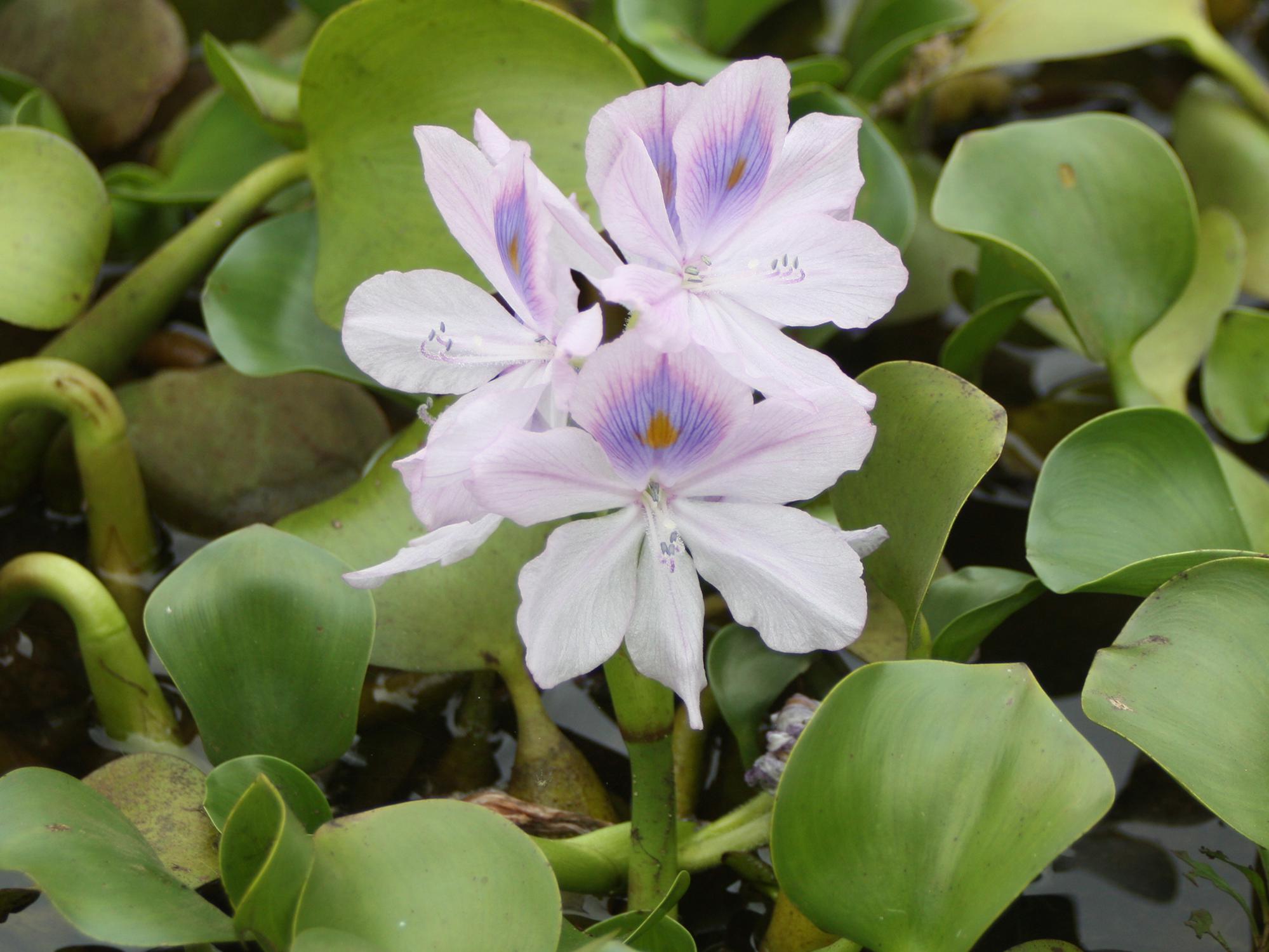Information Possibly Outdated
The information presented on this page was originally released on July 28, 2017. It may not be outdated, but please search our site for more current information. If you plan to quote or reference this information in a publication, please check with the Extension specialist or author before proceeding.
Beautiful water hyacinth yields long-term damage
STARKVILLE, Miss. -- Although water hyacinth is beautiful and quite stunning when in bloom, it is not a desirable plant in ponds.
Water hyacinth floats gracefully on water surfaces. Its inflated, spongy stems feature attractive flower spikes adorned with up to 20 blue, yellow and light-purple flowers. It is common on many of Mississippi's navigable waterways, including the Tennessee-Tombigbee Waterway and the Pearl River drainage. Native to tropical South America, water hyacinths feel right at home with Mississippi's warm summers and fertile waters.
Although the plants produce seeds, most expansion results from adult hyacinths simply growing new offshoots. Like Bermuda grass, one plant will send out a rhizome that sprouts another plant. A single, healthy hyacinth can produce more than 500 plants by the end of the growing season. Woven together by a meshwork of rhizomes, dense mats of water hyacinths can completely blanket hundreds of acres of water. Waves or boat traffic can break off pieces of the mat, which then drift to another location and expand.
The rapid growth and dense mats block light to the water. No light means no photosynthesis by phytoplankton and other rooted plants. In turn, no photosynthesis means no oxygen, thus no fish.
The water hyacinth is a multimillion-dollar problem in Florida where the plant rapidly expands in the tropical and subtropical climate. In addition to biological problems that ultimately impact fish, water hyacinth can block boater access, impede navigation, clog intake pipes and reduce water flow.
Mississippi’s winters are tough on the plant. Subfreezing temperatures in the winter are common to most of Mississippi, and the cold zaps this tropical invader. The luxurious green mats of summer and fall turn brown as the freeze-killed plants decompose.
Several months after the winter kill, the decomposing plants lose their buoyancy and sink. The hyacinth mats continue to decompose after they sink, stripping oxygen from the water. In the absence of oxygen, the decomposition process slows.
Tons of dead plant matter sink at once, so a large amount of the material remains undecomposed after a year. A few plants, sheltered from the cold by taller plants, survive to propagate more hyacinths throughout the summer and fall. The winter-kill process repeats.
After several years, the area develops a bottom with a thick layer of undecomposed plant material. The organic matter continues to suck oxygen from the water, and the unstable, peat-moss-like bottom is unusable by fish and other aquatic life. Over several years, the build-up of plant material makes the water shallower.
Water hyacinths, like other exotic aquatic life, are here to stay. Control of problem areas is expensive but essential, and researchers continue to seek more effective and economical controls.
So, the next time you are out on public waters and see this handsomely colored plant floating majestically by you, just let it pass. This is not a plague you want to transport to your private fishing pond.

Editor’s Note: Extension Outdoors is a column authored by several different experts in the Mississippi State University Extension Service.





